by Mark McGee
When the Tennessee Walking Horse National Celebration rolls around in August it begins to look a lot like Christmas for David Williams.
When the two and three-year-old stallions enter the ring Williams, a longtime breeder and owner of Sugar Creek Farms in Shelbyville, will be filling out his wish list while sitting in box B-26.
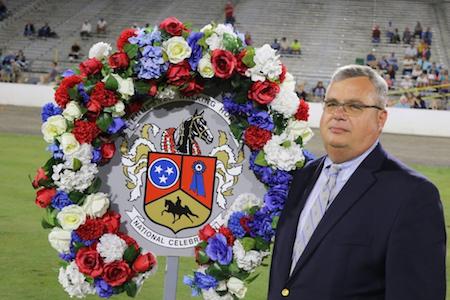
“For me it is David Williams going Christmas shopping,” Williams said. “I am always looking for the next one. If a stallion wins the two or three-year-old classes at the Celebration, he has the potential to be a good breeding horse.
“The Celebration is a proving ground. The two and three-year-old stud classes have my attention. I don’t miss those.”
The Maiden Championship at the International Grand Championships in Murfreesboro, Tennessee, is also of interest to him since it puts the flat shod breeding stallions of the future on display.
As the new owner of Sugar Creek Farms the future is even more important for Williams as he studies the best the breed has to offer.
Williams, who along with his wife Theresa purchased Sugar Creek Farms from Debbie and Frank Eichler in December of 2021. Williams was on his second stint at the facility which was previously known as Rising Star Ranch.
He has always loved breeding Tennessee Walking Horses. At one time or the other he has overseen the breeding careers of more than 250 stallions including 15 world grand champions. Managing breeding facilities was one thing, but he always had it in the back of his mind he might one day own one.
“Frank had the property for sale for a couple of years,” Williams said. “Debbie and Frank are some of the nicest folks I have been associated with, I told them if they still wanted to sell the farm, I would like to buy it.”
“I was looking at how land in Bedford County was selling and all of the people who were moving in. I wanted to control my own destiny. I didn’t want to be looking for some place else to work. We so appreciate Frank and Debbie for this opportunity.”
The Williams have three children – Bevin, an attorney in Columbia; Walton, a welder in Eagleville and Buie, who works for Wellpath a healthcare company.
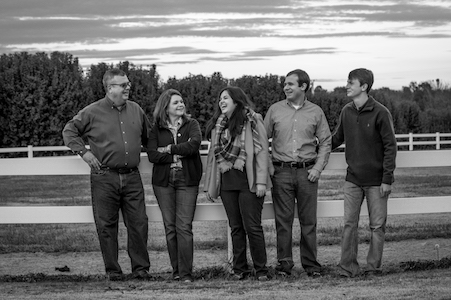
A talk many years ago with a Saddlebred trainer, He made a statement to me I have always remembered,” Williams said. “He said the money for all the clothes my children wear, all the food they eat and all the bills to go to college came from horses.
“That stuck with me.”
His family and his faith are both important to him, but he finds it hard to leave the farm.
“I like to fish, but I rarely do,” Williams said. “I don’t play golf. I don’t have any hobby other than this and I do this 24/7.”
One hobby he has added is breeding thoroughbred racehorses. He raises them for sale, but he never has seen one race live. He does watch races on TV.
“I just like the process,” Williams said. “I like dealing with mares. I like dealing with colts.
“I would come out here even if I didn’t get paid. I am a guy who gets up in the morning and goes to the barn every day. I rarely, if ever, miss. There is always something to take care of here.”
Williams, always looking to provide better service to his customers, expanded a foaling out process this past year. Jennifer Pendleton oversees the foaling out. Jeff Green is always there to help Jennifer when foaling time comes.
“They foaled close to 100 foals this year,” Williams said. “That is a lot of mommas and babies.”
The stallions
There are 19 stallions standing at Sugar Creek – A Bruce Pearl, A Gin To Win, Arm’s Deal For Real M, Bravo!, Call Me John Wayne, Cool Alen Jackson, Gen A’Mighty, I Am Jose’, Jimmy Choo, Jimmer Fredette, Jose’ Jose’, Jose’ Revival, Justified Honors, Lined Up At The Ritz, Nino’s Category Five, Our Commander In Chief, Star Of Ritz, The Memphis Blues and The Titleist.
“We have different genres for different people,” Williams said. “I like to manage around 20. The most I have managed is 28 and that is a little too much.”
Don’t ask him to pick a favorite. He isn’t going to do it.
“It’s like someone asking which one of your children is your favorite,” Williams said. “They are all different. Each one has a different personality. They all have different quirks.
“Ritz was special. Ritz and the sons of Ritz are highly intelligent. In the case of Ritz, a lot of people confused that with being mean. There are many great horses by The Titleist. If you breed your mare to him the chances you will have a horse that will become a household name increases.”
He also likes to add stallions who are the sons of other horses he had stood.
“I have previously had Coin’s Hard Cash and Lined With Cash, and also stood Walk Time Charlie” Williams said. “There is Jose’ Jose,’ I Am Jose’ and Jose’s Revival. Then there is Star Of Ritz by He’s Puttin’ On The Ritz. Also Gen’s Black Gin and his sons Gen A’Mighty, Gen’s Black Maverick and A Gin To Win. I like having the sons, but that is not to say I wouldn’t go outside of the box.”
The passion begins
Williams vividly remembers the first time he sat in the saddle on a padded Tennessee Walking Horse. He was five-years-old, and the horse was the well-known gelding, Hal Mack.
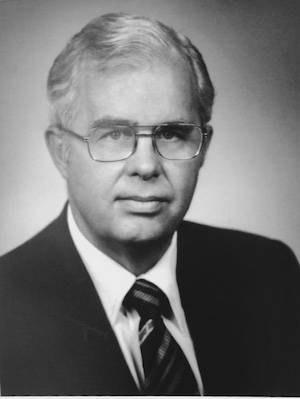
“I remember how that saddle felt,” Williams said. “A good walking horse will hook you.”
His father, John Orlando Williams, a physician in Mount Pleasant, Tennessee, became involved in the walking horse industry through the influence of his good friend, Dr. Roy Harmon a surgeon from Mississippi.
“He got my father involved, so naturally I got involved,” Williams said. “It seems like every Wednesday my brother Tommy and I would go ride at Jack Warren’s barn in Spring Hill. I took to it like a duck to water.
“I showed all through my youth. I also showed for other people. I was fortunate enough to win the Celebration Pony Stake in 1978 on Magic’s Calico Boy, a horse we bought for $2,500 at the Wiser Farm sale.”
Dr. Williams was not a person to do anything half-way, so he became immersed in the walking horse industry.
“My father went into everything heavy,” Williams said. “He had his own barn and his own trainers. We had many trainers at our barn – Jack Littrell, Jimmy Holder, Larry Derryberry, Howard Adkinson, and Wayne Dean. They taught me about horses, but more about people than horses.”
The road to Sugar Creek Farms
Williams stopped riding horses while in college at Middle Tennessee State University where he studied chemistry and worked in the industrial chemical business.
He would eventually show yearlings for his brother John and Lee, which led to him buying and selling them. His first exposure to breeding walking horses started with Dr. Andrew Sisk in Columbia at Locust Hill Farms. Williams’ father had been a major influence in Sisk entering the walking horse industry. While working in an industrial chemistry lab after college, Williams spent time working at Sisk’s barn helping to prepare yearlings to be sold.
“I probably learned more there than a lot of places,” Williams said. “Dr. Sisk had a fine selection of broodmares. I got to fool with some of the best yearlings at the time. Many years the yearlings I prepped at Andy’s were the highest selling at the Wiser Farms sale in the mid-nineties.”
From there he was hired in 1998 by Hoil Walker to work at Twin Hills Farms where The Touch and Pride’s Pattern were standing.
“The story of my life is full of characters,” Williams said. “Hoil was a great one.
“I was there a few years, and I really learned a lot about the breeding process. We stood a lot of horses. I’m In Command was the first horse I ever collected. He was at Hoil’s at the time. Sheryl Crawford had just built a new facility and they were just preparing to move him to the new facility at Saddlecrest.”
While at Twin Hills, Williams also made a connection with legendary breeder Steve Beech from Belfast, Tennessee.
“There was no other person I would want to have learned from than Steve Beech,” Williams said. “He taught me more than I could have ever learned in any classroom. Steve just had a knack. He could tell when a mare was ready to breed. Just being with him every day you absorbed everything he knew.
“I was lucky that when Steve was available, he would help me on breeding days. Spending time with Steve checking mares and evaluating colts was an immeasurable help to me. He taught me a lot about horses and horse people.” He also credits Dr. Randy Baker, Dr. Kristi Gilliam, Dr. Richard Wilhelm, Dr. Jim Baum and Dr. Steve Mullins for imparting their knowledge to him.
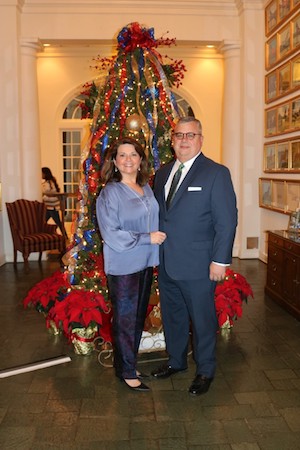
“I have learned a lot from all of the vets I have worked with,” Williams said. “I was quite young, but I have great memories of Dr. Dewitt Owen and being around his facility. Dr. Owen was one of the greatest veterinarians of our breed, he was also well renown in the thoroughbred world. I loved going to his facility. It was immaculate.”
His next stop was Blackhawk Farms in Shelbyville where he stood All American Cash along with Pusher’s Black Hawk and Generator’s Showboat. He also brought Spotted Alen Again with him from Columbia, one of the most popular Spotted Saddle breeding stallions.
“At a time when the breeding of walking horses was slow, Spotted Alen Again kept me in business,” Williams said. “Spotted Saddle Horse people flocked to him. He would easily breed 100 mares a year. He was quite popular.”
Williams next stop was Rising Star Ranch where he managed the breeding of several top stallions such as Broken Promises, Motown Motion, Colors In General, Electrifying and some of the horses he worked with at Blackhawk Farms.
“I call it my first tour of duty at Rising Star,” Williams said. “I spent a few years here and then in 2006 Bill Johnson hired me at Waterfall Farms.”
Some of the horses Williams managed there were He’s Puttin’ On The Ritz, JFK, The Titleist, Gen’s Black Gin, Generator’s Santana, Jose’ Jose’ and Lined With Cash.
“Bill Johnson was very good to me,” Williams said. “He and I had a rapport. He taught me so much about business.
“My first day there he was giving me a tour and we were walking down that big hallway lined with those big stalls. He told me he was going to change them all out. I told him these are the best stalls in town. This is what he said to me, and I took it to heart. He said , ‘Son, if you expect people to pay a certain price they expect it to look a certain way’.”
Following that, Williams returned to Rising Star and brought some of the stallions from Waterfall with him along with Johnson’s advice.
“Waterfall was an impressive place,” Williams said. “I lived on the farm for a while. I mowed every inch of that place. I also had a lot of good relationships with people there. We bought and sold a lot of horses there.
“And when I came back to Rising Star I remembered what Bill told me. When people walk into this barn, I want everything to look right. We want our clients to enjoy being here and first impressions are very important.”
Say yes to the colt
Williams believes that breeding and selling yearlings go hand-in-hand.
“Marketing and producing horses are never-ending passions for me,” Williams said.
He credits his wife and daughter for helping him to develop a unique way to market yearlings at his annual production sale the past two years.
“My wife and daughter made me watch the show ‘Say Yes to the Dress’ against my will,” Williams said. “But while I was watching it, I said we can do the same thing with selling colts. All they have is a vast number of wedding dresses. You know the person you are selling to wants a dress. The job is to find the dress they want.
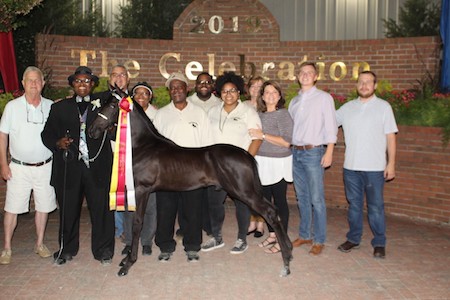
“That is what we do here with our auction. We probably sell more than 100 yearlings a year here. It is not a traditional auction. We have as good a selection of colts as you are going to find anywhere. We have colts in the $25,000 range and colts in the $2,500 range. It is not unlike that dress store.”
In traditional auctions the buyer and seller are often victims of the time of day the horse sells. At any given time, the number of buyers with enough cash to make a purchase can vary.
“People tell me what they are looking for,” Williams said. “We don’t use a handler. We have the yearlings behind gates. I can show someone 30 colts in a short amount of time. When you show them a colt they like, you know it immediately.
“It is like selling on demand. No one wants to wait on anything anymore. People can call and set up times to view the yearlings. We also sell online. We have been highly successful doing that.”
Better breeding through technology
Williams credits the use of DNA data, the formation of iPeds and the Stallion Report provided by The Walking Horse Report as key factors in the improvement of the quality of the breed.
“All the different breeds have gone to DNA testing,” Williams said. “Some breeds do it on specific horses. DNA testing in our breed makes sure the colt you receive is by the stallion you paid the stud fee for which is always a good thing.
“Jose’ Jose’ is an example. All of his foals have been parentage verified, the most of any stallion. Ebony Masterpiece is still on the list ranked higher than him with 3,500 foals but they all weren’t parentage verified.”
Williams adds that before DNA evaluating it wasn’t possible to be 100% certain who was the breeding stallion for a specific foal. There was also no guidance on the best bloodlines to cross, just word of mouth advice.
“What would happen is a farmer would buy an Ebony Masterpiece stud fee,” Williams said. “He would take his mare and breed it to Ebony and then put her back in the field with one of his studs. Who is to say who the foal is by when you don’t have DNA?
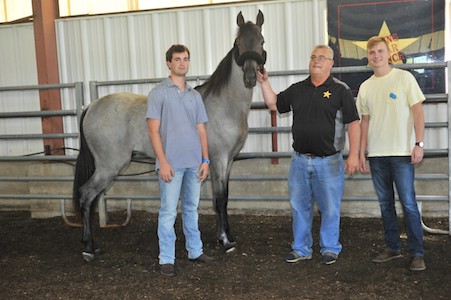
“A lot of that happened with many different horses. I am just using Ebony Masterpiece as an example.”
Williams was on the steering committee for the development of the iPeds program by the Tennessee Walking Horse Breeders and Exhibitors Association.
“When I used to sell yearlings for Dr. Sisk, I could go to the Breeders Association in November and get a printout of all the Pusher colts and all of the Generator colts. But with iPeds, with the push of a button I can read the pedigrees and how many times a mare was bred. It is one of the greatest tools of our breed.
But, Williams thought there was a need for even more information in order to determine what crosses did the best in the show ring.
“The thoroughbreds have it nailed,” Williams said. “You can find out how a horse works on certain track, even an obscure horse.
“I told Jeffrey Howard (Walking Horse Report publisher) we needed something like that for walking horses and he set up a meeting with his father David (owner and founder of Dabora, Inc.). That is how we started the Stallion Report. Now we can track sires’ and dams’ production through the horse show records. It has helped me so much in selling colts…finding the right cross.”
The question most often asked of Williams by the owners of broodmares is what stallion they should breed their mare with.
“I tell them the tools are available,” Williams said. “I tell them to get the Stallion Report to get a good idea and iPeds to get a better idea.
“Both systems are perfect on their own, but I marry the two systems. I take data from one and data from the other and hand enter it to get the most accurate profile.”
Finding the right crosses is a percentage deal for Williams. Some people say it is a crap shoot. He doesn’t think so.
“People have told me that and I haven’t found that to be true,” Williams said. “There are some horses that have the tendency to produce more winners than others. And there are surprises. It happens all the time.
“I put out a report each year and it shows the sires of the two, three and four-year-olds. If the data doesn’t prove it, you are doing your customers a disservice. If the customer is not successful, then I am not going to be successful.”
Breeding is about balance
Some horses are high stepping. Some have great back ends. Williams wants to breed colts that have the best combination of both traits.
“Horses have unbelievably improved,” Williams said. “Our goal is always to breed for balance...a horse that is good up front and good behind overall. You don’t want too much of one thing."
“There are show-gaited and traditional walking horses. There is a difference. Some are a little more show gaited. There are some that are more traditional walking horses. They will shake and walk with every step. I am a traditional walking horse kind of guy. I like to see them walk and shake. People liked Delight Bummin’ Around. He didn’t do that much compared to horses today, but he could walk and shake.”
He admits that like athletes it is difficult to compare the greats of different generations.
“Every generation has their greatest,” Williams said. “Growing up, I remember people telling me Sun’s Delight was the greatest horse. He would walk and shake, but you know good and well he wasn’t stepping up like today’s show horses."
“I think The Super Stock was one of the better horses to ever show in the big stake. There were three workouts and Super Stock dominated the class. I remember Ebony’s True Grit and Shades Of Carbon side-by-side and True Grit passing him. That was when everybody liked the speed. That is what put butts in the seats. The speed and the rivalries.”
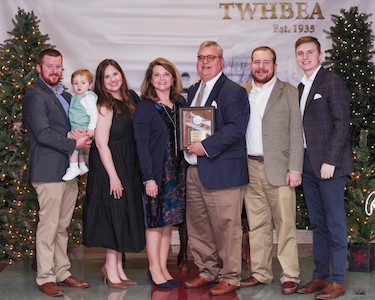
Williams refers to his memories as “Celebration snapshots.” He has seen it all through his years of involvement with walking horses. He has seen the Tennessee Walking Horse breed rebound in many ways, but he does miss one thing – the standing room only crowds.
“It was like being in New York City,” Williams said. “You couldn’t move."
“I remember going down the ramp and into the ring and seeing faces in the West grandstand as far as you could see. That is the closest thing to being a rock star and not being able to sing.”
His passion for the breed has grown stronger with each passing year. Like the old saying goes, “if you love what you do then you will never work a day in your life.”
“I love what I do,” Williams said. “Loving what you do makes you live longer."
“Our clients are the best. They really support us. I am blessed. I couldn’t be more blessed.”